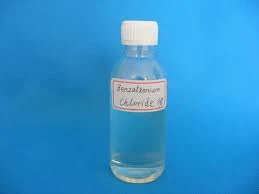polycarboxylic acid examples
Polycarboxylic acids are a class of organic compounds characterized by the presence of two or more carboxyl groups (-COOH) in their structure. These acids play a significant role in various chemical processes and are fundamental to numerous industrial applications. Common examples include citric acid, oxalic acid, and malic acid, each exhibiting unique properties.
Citric acid, widely found in citrus fruits, is perhaps the most famous polycarboxylic acid. It contains three carboxyl groups and is a key player in the Krebs cycle, which is essential for cellular respiration in aerobic organisms. Beyond its biological significance, citric acid is extensively used in the food industry as a natural preservative, flavor enhancer, and acidulant. Its chelating properties allow it to bind metals, making it useful in cleaning products and as a water softener.
Oxalic acid, a simple dicarboxylic acid, is found in many plants, particularly in leafy greens like spinach and rhubarb. Its two carboxyl groups contribute to its strong acidity. Additionally, oxalic acid is known for its ability to form insoluble complexes with metal ions, which is utilized in various applications such as metal cleaning and rust removal. However, its toxicity necessitates careful handling, as excessive consumption of plants containing oxalic acid can lead to health issues.
Malic acid is another noteworthy example, primarily found in apples and other fruits. This dicarboxylic acid contributes to the sour taste and is pivotal in the malate-aspartate shuttle, a metabolic pathway involved in energy production. In the food industry, malic acid is often used to enhance flavor, especially in candies and beverages. It is generally recognized as safe and is approved for use in many countries.
polycarboxylic acid examples

The utility of polycarboxylic acids extends beyond food and metabolism. They are pivotal in the synthesis of various polymers and resins. For instance, glutaric acid, another dicarboxylic acid, is used in the production of polyester resins and can serve as a precursor for the synthesis of biodegradable plastics. Additionally, these acids are involved in the formulation of water-soluble fertilizers, enhancing the solubility and bioavailability of nutrients for plants.
In the realm of pharmaceuticals, polycarboxylic acids are essential in drug formulation and delivery systems
. Their capacity to form stable complexes with pharmaceutical agents improves the solubility and bioavailability of drugs, which is particularly beneficial for compounds that are poorly soluble in water.Moreover, polycarboxylic acids can play a significant role in environmental chemistry. Some acid derivatives can act as biodegradable chelating agents, effectively removing heavy metals from wastewater without the residual effects often associated with synthetic chelating agents.
In conclusion, polycarboxylic acids are versatile compounds that play critical roles in food science, pharmaceuticals, and environmental applications. With ongoing research, the potential applications of these acids continue to expand, making them an important focus of study in chemistry and related fields. Understanding their properties and functionalities opens doors to innovative uses and solutions to real-world challenges. As industries seek sustainable and effective solutions, polycarboxylic acids stand out as promising candidates, bridging the gap between natural chemistry and industrial demands.
-
Pbtc Scale InhibitorPBTC: A Scale Protector for Industrial Water TreatmentNewsAug.05,2025
-
Organic Phosphonate: An Efficient Defender in the Field of Scale InhibitionNewsAug.05,2025
-
Hydrolyzed Polymaleic Anhydride: Green Pioneer in Scale Inhibition FieldNewsAug.05,2025
-
PAPEMP Polyamino Polyether Methylene Phosphonic Acid For SaleNewsAug.05,2025
-
Flocculant Water Treatment: A Pioneer in Purification in the Field of Water TreatmentNewsAug.05,2025
-
Benzyl Isothiazolinone: An Efficient and Broad-Spectrum Antibacterial Protective GuardNewsAug.05,2025





